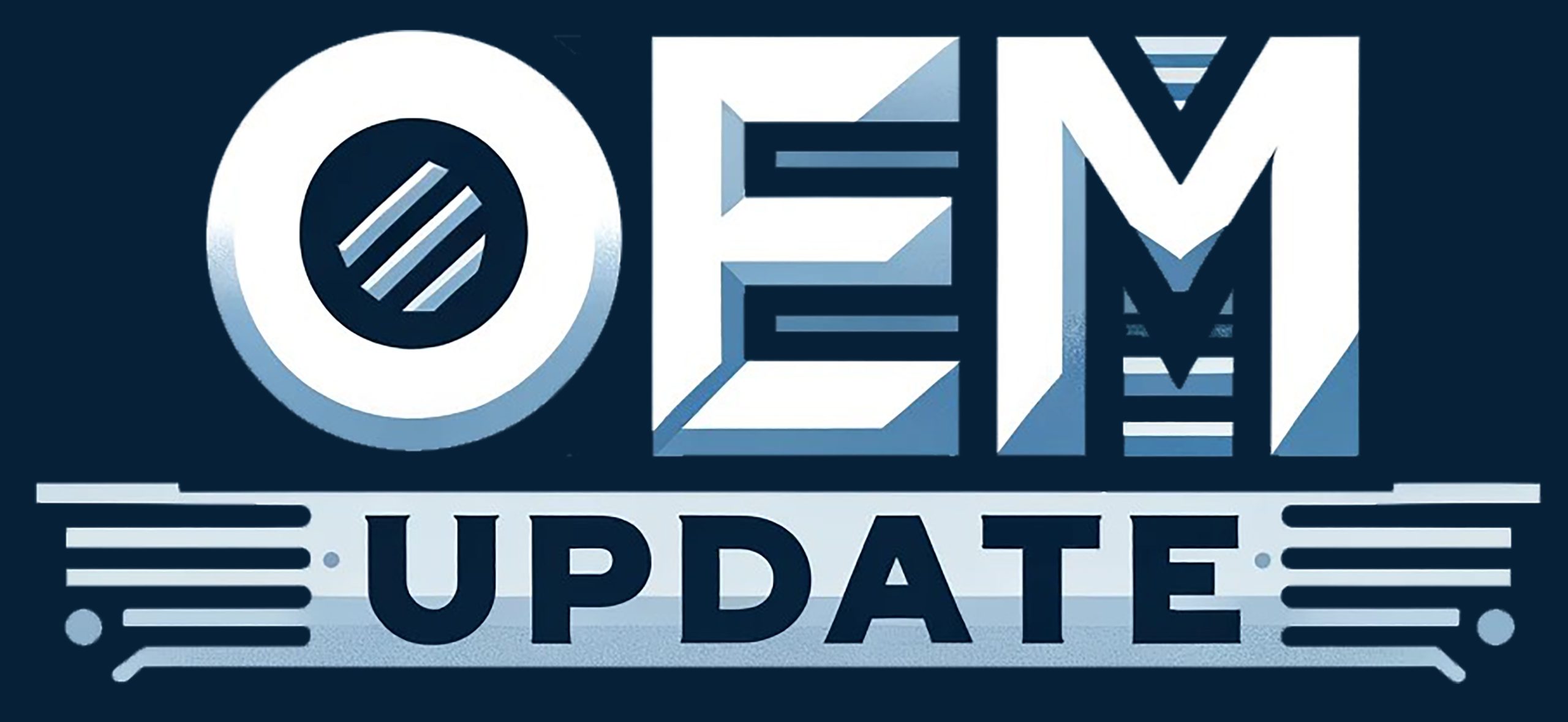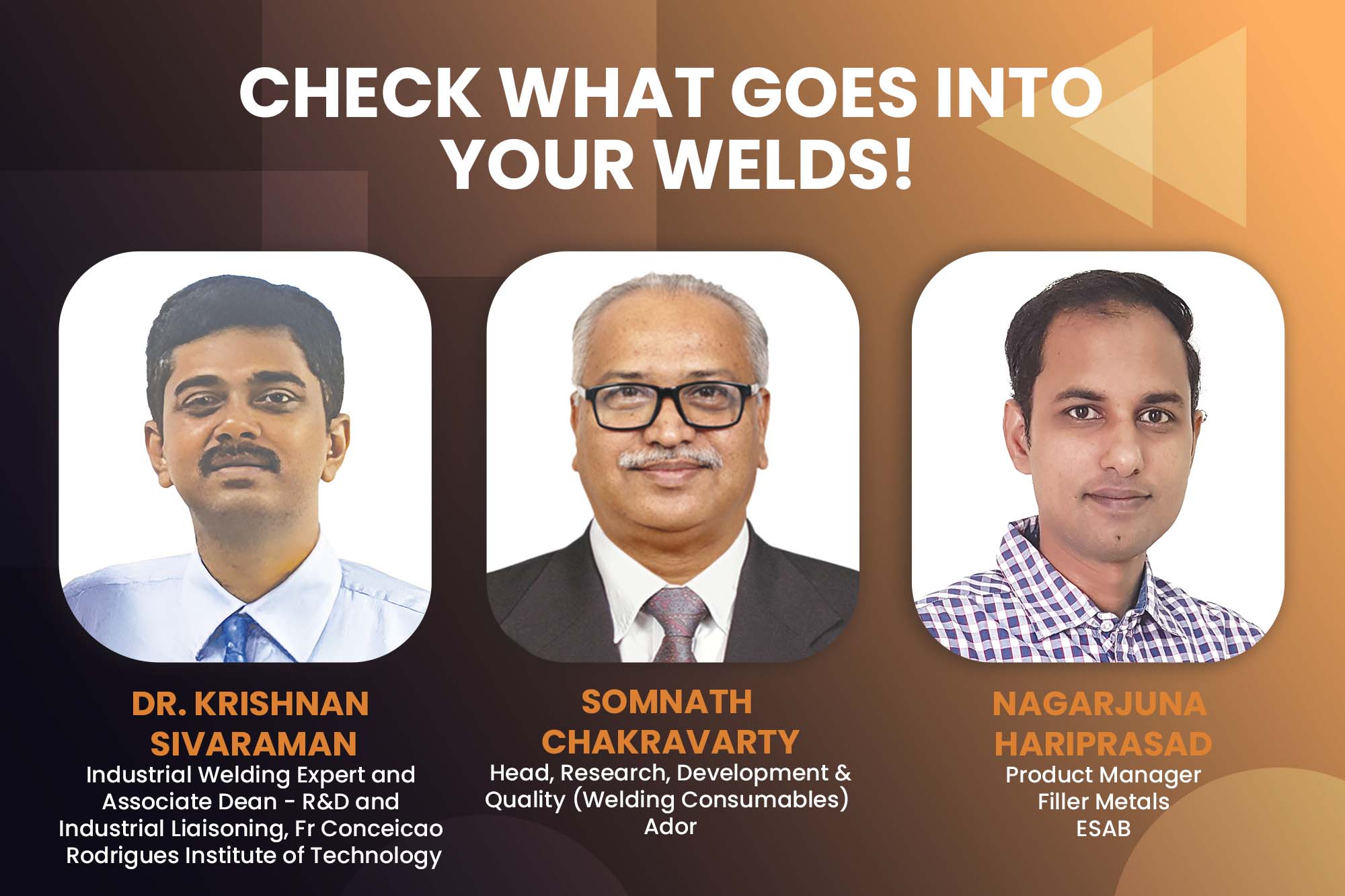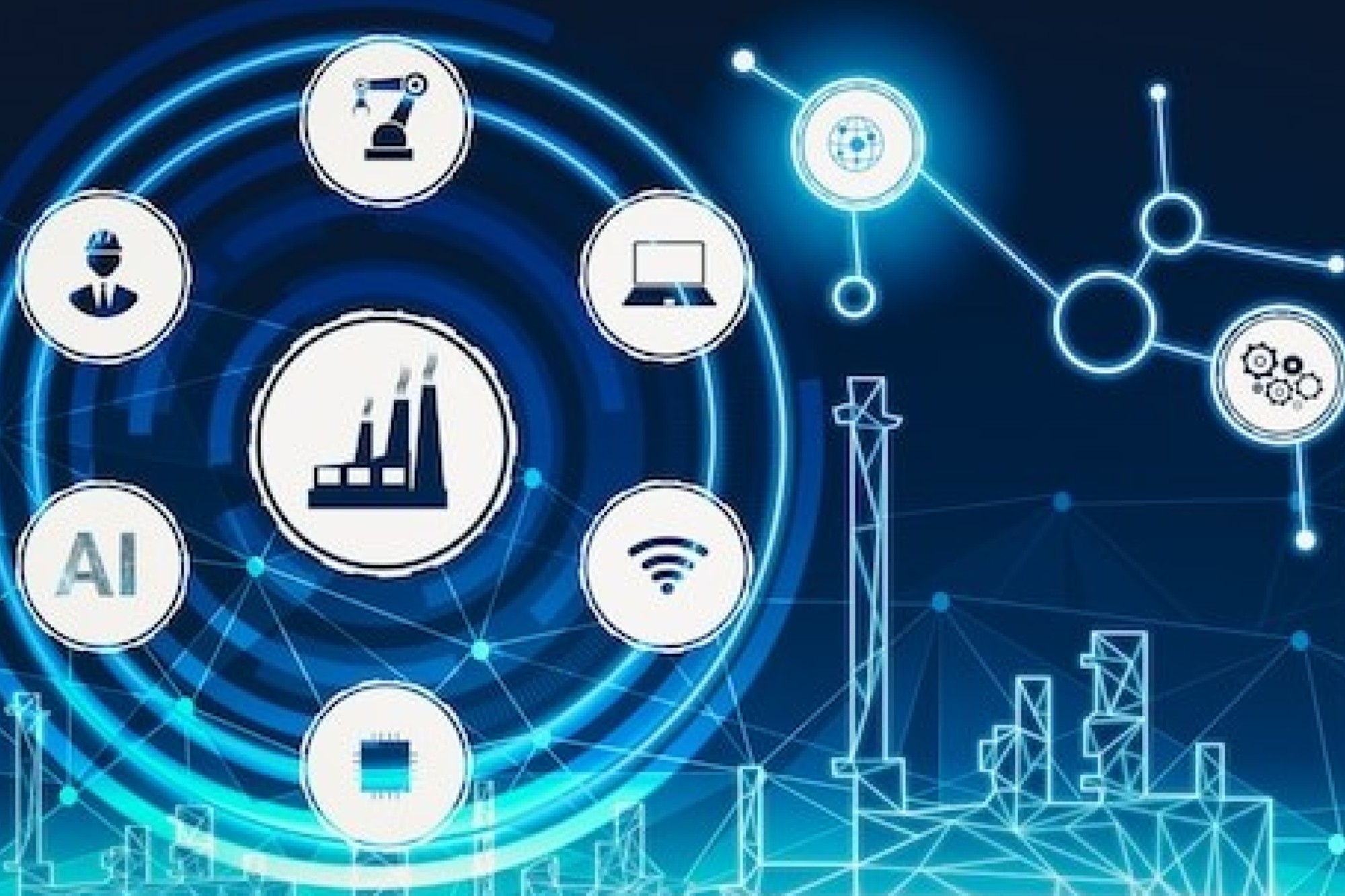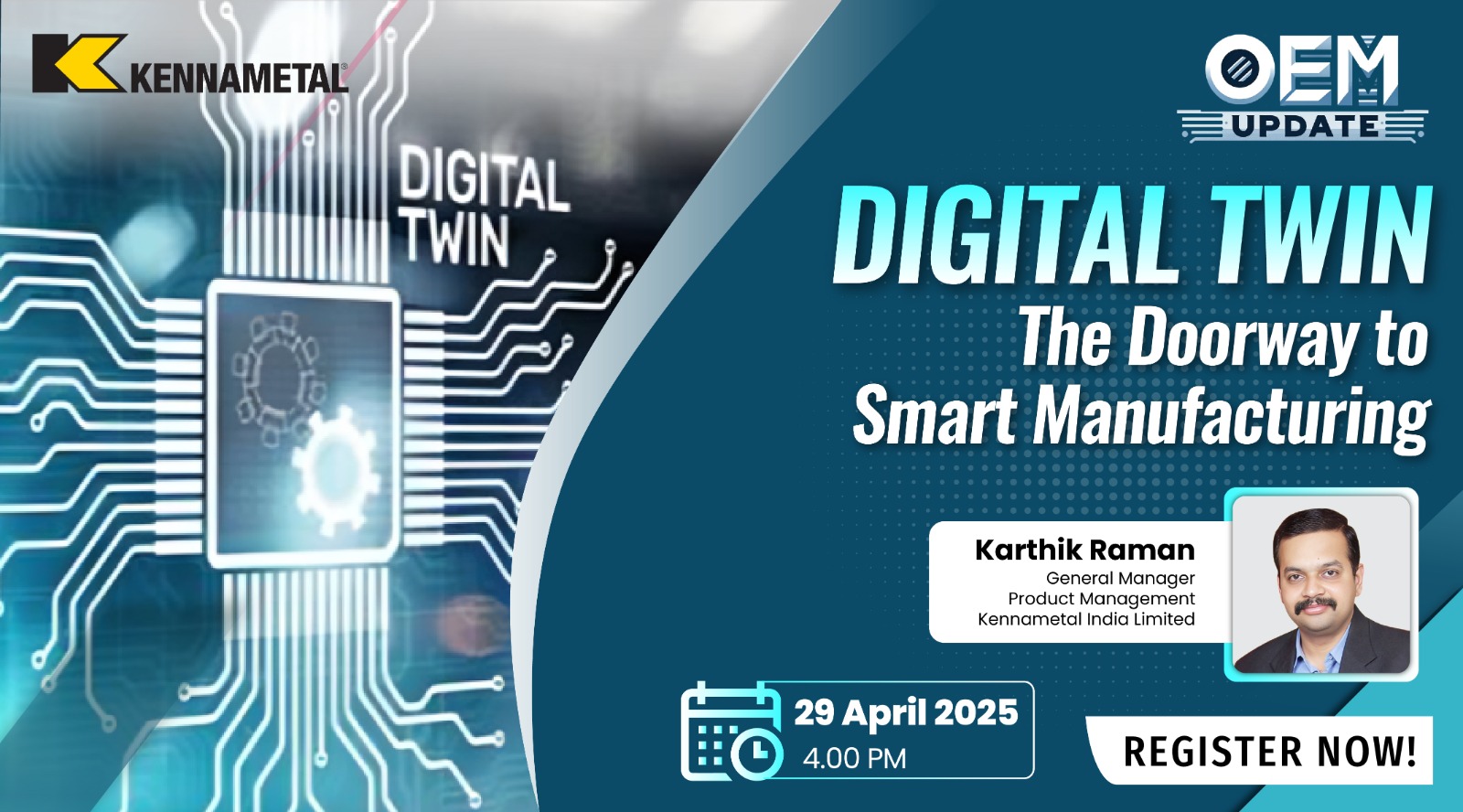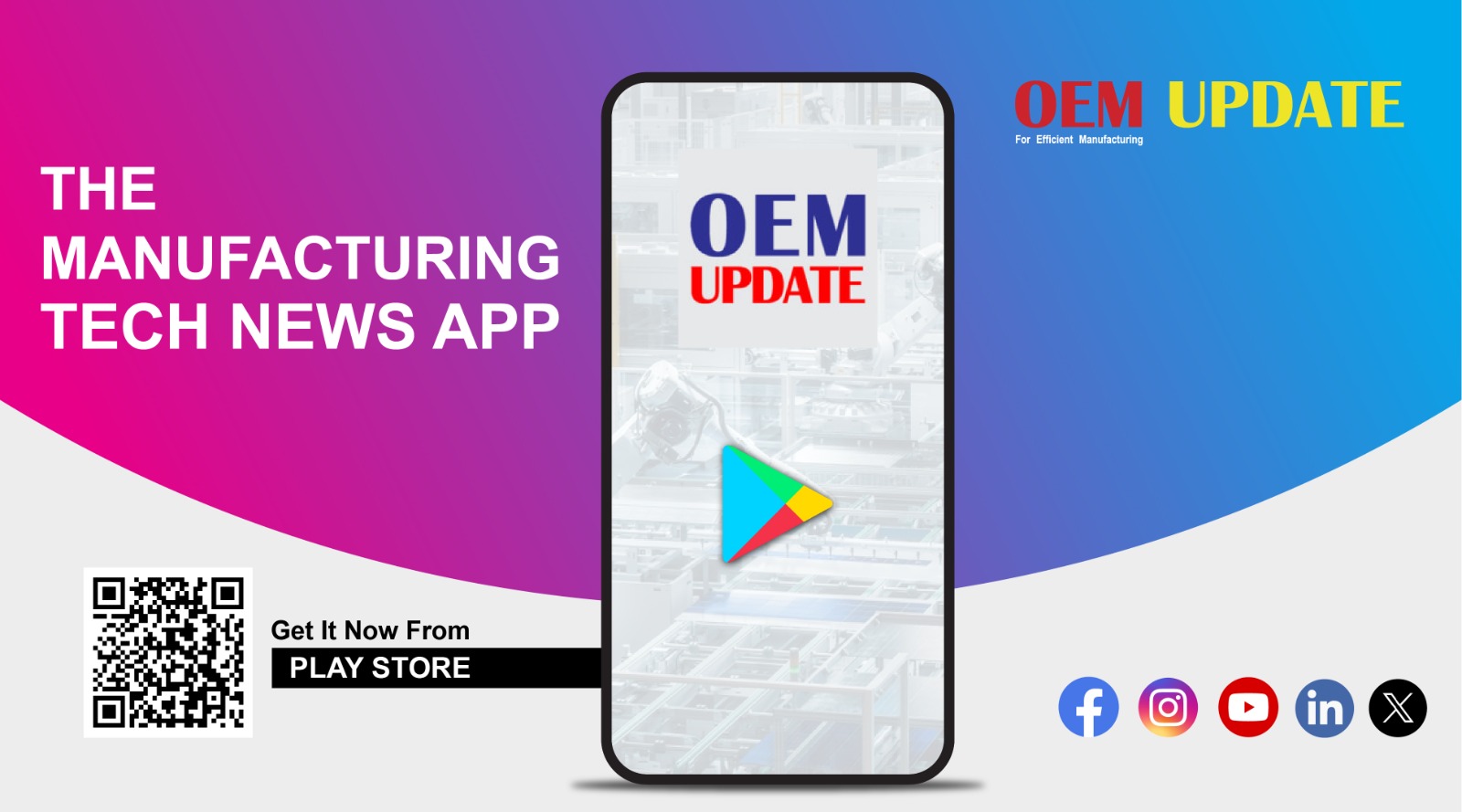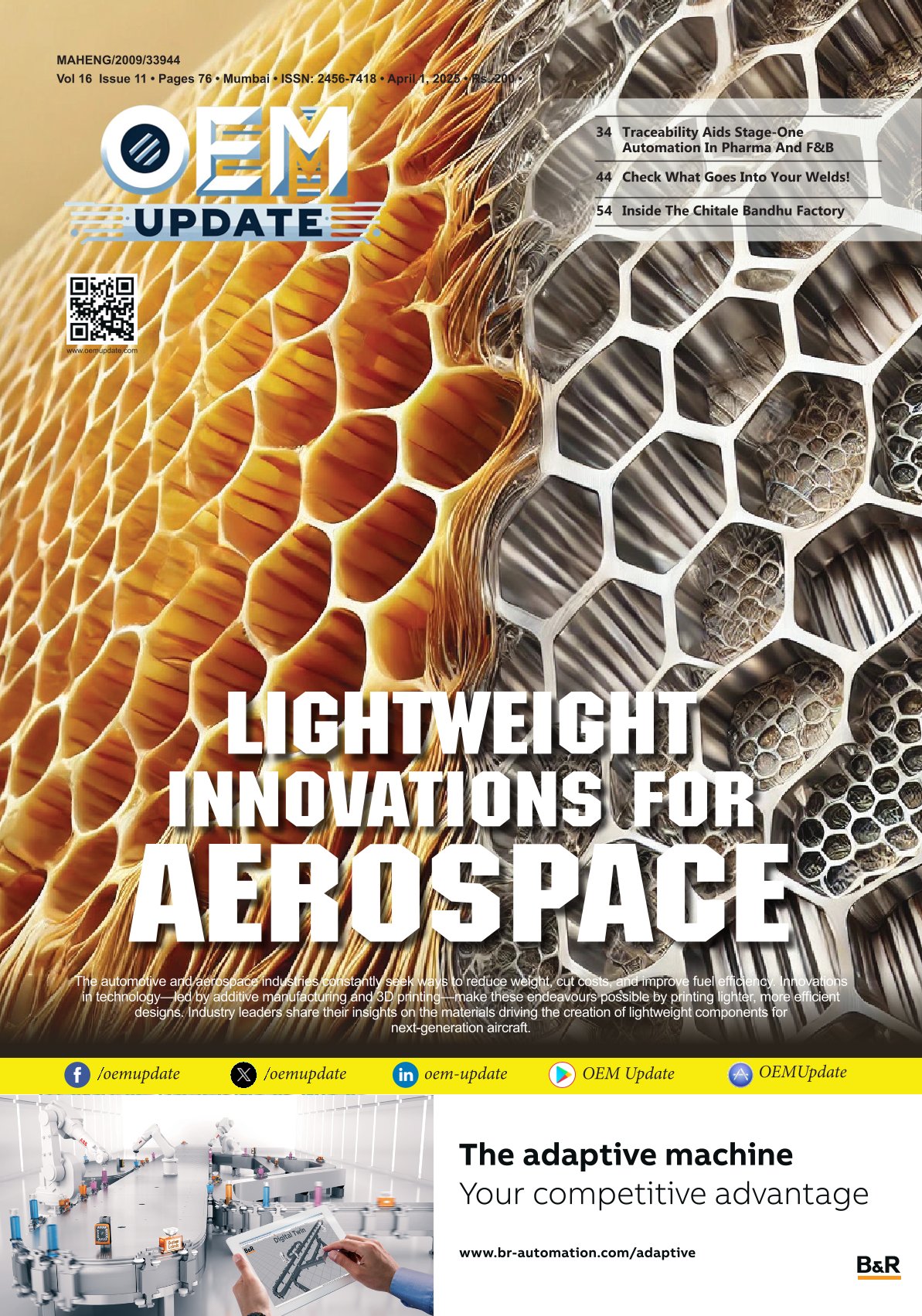Check what goes into your welds!
By Staff Report April 1, 2025 5:18 pm IST
Airplanes, skyscrapers, and pipelines rely on advanced welding consumables for strength and precision. From flux compositions to hydrogen control, filler metals, and sustainable welding tech—discover how innovations in welding materials shape industries while making them endure the toughest of weather fluctuations and storms.
You are watching a SpaceX rocket launch. The rocket lifts off when the countdown hits zero and the engines roar, spitting fire hotter than the sun’s surface (over 3,000°C!). Did you wonder how the engine does not melt? Well, the welding process was in action. Rocket engines are built using exotic heat-resistant alloys and require super-precise welding to survive these extreme temperatures. Now, welding needs the aids – the materials that survive the heat, the wind and the ice.
The rockets weld the nozzles and combustion chambers using Nickel-based filler wire, such as ERNiCrMo-3 and Inconel 625. TIG welding Electrodes (Thoriated Tungsten – EWTh-2) help in the precision welding of fuel injectors. Shielding gas (Argon + Helium Mix) protects molten metal from contamination. So next time you watch a rocket launch, think about the thousands of welded joints inside the rocket engine, each making the mission successful.
Advancements in welding consumables are ongoing, with R&D efforts continually focused on discovering and applying new materials to enhance final products and improve upon existing solutions. Here, we explore some of the major welding consumables.
Flux compositions
Flux compositions’ advancements improve weld quality and minimise defects, particularly in critical applications such as pipelines, structural welding, and pressure vessels. The flux composition of welding filler metals has a major effect on arc behaviour, spatter formation, slag release, weld bead appearance, weld metal purity, and mechanical properties.
Modern fluxes are formulated to optimise metallurgical properties, arc stability, and weld integrity. They incorporate alloying elements like manganese and silicon to boost strength, toughness, and crack resistance while controlling oxygen content to reduce porosity and inclusions.
Stabilising additives give better arc control, smoother arcs, and higher deposition rates, particularly in submerged arc welding (SAW), leading to greater efficiency and cost savings. Additionally, tailored flux formulations enhance mechanical properties and corrosion resistance in specialised applications such as offshore, nuclear, and automotive welding while also ensuring compatibility with automated and robotic welding systems for consistent, high-quality welds with minimal manual intervention.
Dr. Krishnan Sivaraman, Industrial Welding Expert and Associate Dean of R&D and Industrial Liaisoning at Fr. Conceicao Rodrigues Institute of Technology, shares that advanced flux compositions contribute to stronger, more reliable welds by improving weld quality, reducing defects, and enhancing efficiency, making them indispensable in high-performance welding applications.
Hydrogen for welding
Naturally, hydrogen gas is not present in the atmosphere. It comes in the weld metal by dissociating moisture in the flux coating during welding. The flux coating has a natural propensity to pick up atmospheric moisture. So, if an electrode is kept open for some duration, it picks up moisture and when it picks up moisture, that moisture during the welding arc dissociates.
The solubility of hydrogen in steels is mainly dependent on their crystal structure, temperature, and composition. It is way more soluble in austenite than in ferrite.
The diatomic hydrogen gas reacts with the steel and is dissolved in atomic form. The hydrogen solubility in steel increases with temperature and ranges from less than 1 ppm at room temperature to about 8 ppm at 704⁰C.
Nickel makes steel absorb more hydrogen, while molybdenum has no effect. Tungsten reduces hydrogen absorption, whereas vanadium, titanium, niobium, zirconium, and tantalum increase it, especially at lower and moderate temperatures.
Somnath Chakravarty, head of research, development and quality (Welding Consumables) at Ador Welding Limited, explains that hydrogen cracking occurs when hydrogen atoms diffuse into the metal and form hydrogen molecules in tiny voids. The pressure from these molecules can cause the metal to crack. Hydrogen cracking can occur immediately after welding or a short time later. It can occur in the weld metal or the heat-affected zone. High-strength, low-alloy steels are particularly susceptible due to their poor ductility or elongation properties.
Low-hydrogen electrodes play a critical role in welding high-strength steel structures or components. They help mitigate the risk of hydrogen-induced cracking (HIC), which is also called cold cracking or delayed cracking.
Hydrogen presence, susceptible microstructure, and residual stresses are the primary factors contributing to hydrogen-induced cracking. Low-hydrogen electrodes are designed to minimise the hydrogen diffused into the weld metal, thereby mitigating the risk of HIC.
These electrodes have low moisture content in their coatings, allowing them to diffuse less hydrogen during welding. Low-hydrogen electrodes also contain more basic compounds that reduce impurities and oxygen levels in the weld, resulting in cleaner, tougher, and ductile welds resistant to cracking.
Filler metals
Manufacturers use various filler metals and process techniques in conjunction with relevant filler metals to improve deposition rates and reduce welding time.
Nagarjuna Hariprasad, Product Manager – Filler Metals, ESAB, shares that “Flux-cored, metal-cored wires, with their higher current density, melt faster than solid wires, providing higher deposition rates and reduced welding times. Gas metal arc welding with higher diameter wires like 1.4/1.6 mm in conjunction with a twin wire process setup helps significantly improve deposition rates.
Submerged arc welding with various combinations of wire diameters like 3.15/4.00/5.00 mm and process variants like twin wire, tandem, tandem-twin, and 3/4/5/6 multiwire can boost the deposition rates from 20 kg/hr to more than 100 kg/hr. Robotic and mechanised systems and compatible filler metals help significantly reduce weld time and improve multifold productivity.”Filler metal technology advancements enable faster welding processes, higher deposition rates, and improved efficiency across industries. Filler metal composition can be made to format and deploy application techniques. With this, manufacturers can reduce welding time while maintaining high-quality standards.
High-deposition filler metals improve welding efficiency by increasing deposition rates, optimising chemical composition, enhancing automation compatibility, and reducing preheating and post-weld work.
Metal-cored (MCAW) and flux-cored (FCAW) wires offer higher deposition efficiency with lower spatter and deeper penetration, while high-efficiency submerged arc welding (SAW) consumables enable deep fusion with fewer passes, significantly cutting welding time. Modern filler metals incorporate controlled alloying elements like manganese and silicon to enhance wetting action and bead shape, while low-spatter formulations minimise clean-up time, boosting productivity. These filler metals are also designed for robotic welding, ensuring consistent high-speed performance with improved wire feed speeds that allow faster deposition without compromising weld quality. Additionally, low-hydrogen formulations help lower preheat requirements in high-strength steel applications, and improved slag control in flux-cored and SAW processes minimises post-weld clean-up, streamlining the entire welding process.
Welding consumables for dissimilar metal joining (DMJ)
When two dissimilar metals are joined, it is important to note that the joined metals have different characteristics, which can affect the quality of the weld. Before choosing a method, evaluating the filler material and the adjoining metals is necessary. The common methods for dissimilar metal welding include- Gas metal arc welding (GMAW), Laser welding, Friction welding and Electron beam welding.
A couple of cares and pre-weld processing ensure superior weld quality: specialised filler materials that act as a bridge between dissimilar materials complement the joining materials’ characteristics while precoating and surface treatment also help with the seamless joining of dissimilar materials. Additionally, filler material that can withstand extreme temperatures and has better blotting properties further enhances the joining of dissimilar metals.
Dr Sivaraman adds that DMJ is essential in aerospace, automotive, and power generation industries, where combining different metals enhances performance and reduces costs. However, challenges such as thermal expansion mismatch, brittle intermetallic compounds, and corrosion must be addressed.
Innovations in welding consumables have significantly improved DMJ by introducing advanced filler materials like nickel-based, copper-based, and hybrid alloy fillers, which enhance strength, ductility, and corrosion resistance. Additionally, flux-cored and metal-cored wires with tailored compositions improve joint toughness and arc stability. Smart coatings, including nano-enhanced electrodes and active flux coatings, further optimise metallurgical properties. Specialised consumables for innovative welding techniques, such as cold metal transfer (CMT) wires for aluminium-to-steel applications and friction stir welding (FSW) consumables for solid-state joining, have also emerged. Corrosion-resistant electrodes, such as high-entropy alloys (HEA) and duplex stainless steel fillers, ensure durability in extreme environments.
Sustainability trends
Mr Hariprasad thinks that environment-friendly welding machines are an inevitable choice for the manufacturing industry as they strive to meet sustainability goals.
Due to the power-intensive nature of welding and cutting, companies invest in innovative technologies and products that reduce power consumption, thereby conserving natural resources. The advanced range of welding equipment features state-of-the-art inverter technology, which enables high-speed switching. This allows for using smaller transformer coils and magnetic cores while maintaining efficiency. Additionally, the products are designed to prioritise material compliance, recyclability, and repairability, minimising environmental impact by reducing material waste and pollution.
Mr Chakravarty shares an example of innovation with Rhino E by Ador India’s first battery-powered welding machine, designed with a strong emphasis on reducing carbon emissions and noise levels.
Similarly, stricter sustainability norms force organisations to relook at their environmental impact. Inverter-based technologies are replacing diesel welding generators with a lower environmental impact. Organisations are upgrading to ensure that welding machines adhere to the most recent pollution norms, and there is an increased use of environmentally friendly packaging for transportation and storage. Factories are also working to reduce air, water and noise pollution.
————————————————————————————————–
Dr. Krishnan Sivaraman, Industrial Welding Expert and Associate Dean – R&D and Industrial Liaisoning, Fr Conceicao Rodrigues Institute of Technology.
Stabilising additives ensure better arc control, smoother arcs, and higher deposition rates, particularly in submerged arc welding, leading to greater efficiency and cost savings.
Somnath Chakravarty – Head, Research, Development & Quality (Welding Consumables), Ador
The automotive industry is adopting new welding technologies, such as the Hot TIG process, thin sheet welding, and hybrid welding, to aid component manufacturers.
Nagarjuna Hariprasad, Product Manager – Filler Metals, ESAB
Sustainability trends influence the development of environmentally friendly welding machines. Companies invest in innovative technologies and products that reduce power consumption and conserve natural resources.
Cookie Consent
We use cookies to personalize your experience. By continuing to visit this website you agree to our Terms & Conditions, Privacy Policy and Cookie Policy.
